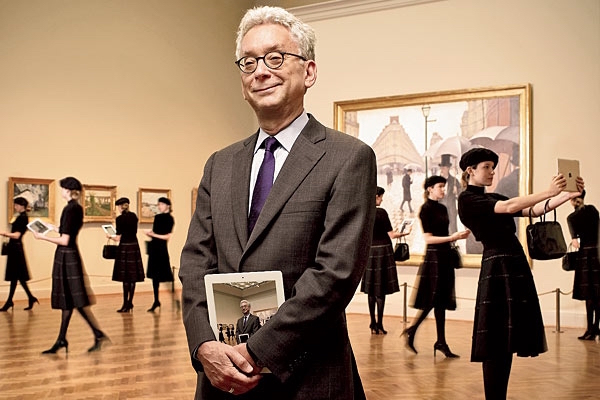
Photo: via: Chicago Mag
Douglas Druick , the director and president of the Art Institute of Chicago, has announced that he will step down from the position when a suitable replacement is found.
Druick announced his decision during a meeting with the museum’s board on Tuesday evening.
Druick, who first joined the Art Institute as a curator in 1984, was serving as acting president when he was appointed to succeed James Cuno as director of the institution in 2011.
“The next chapter in the life and legacy of the Art Institute hinges on an all-important five to seven year endeavor to realize the museum’s long-range plan that I believe requires uninterrupted leadership,” Druick said in a statement. “I will retire with confidence, knowing that the foundation for the museum’s future is firmly in place and that we will energetically pursue our ambitious vision. For decades, the Art Institute’s life has been my own, but I need now to draw a distinction between my professional and personal life,” he added.
Stefan Edlis and Gael Neeson
Photo: Jeremy Lawson via The Wall Street Journal
During his five year tenure, Druick oversaw a range of important exhibitions and managed the largest art donation in the museum’s history, 42 contemporary works from the collection of Stefan Edlis and Gael Neeson—including nine silkscreens by Andy Warhol, three Jasper Johns paintings, two Roy Lichtenstein canvases, four Gerhard Richter paintings, and a Cy Twombly sculpture—worth a combined $500 million.
During Druick’s directorship, the Art Institute of Chicago was named top museum in the world by Trip Advisor.
“I have been deeply proud to lead one of the finest museums in the world,” said Druick, “and to work for three decades with an exceptional cadre of remarkably talented museum colleagues. It is my hope that together we have ensured a solid footing for the Art Institute … with a future filled with more opportunities than challenges.”
The Art Institute of Chicago.
Photo: Wikipedia.
“Douglas is one of the most respected, thoughtful, and innovative museum leaders in the world,” Bob Levy, chairman of the museum’s board, said in a statement.
“He has made extraordinary contributions to the development of the Art Institute,” he added. “His initiatives to place a stronger emphasis than ever before on visitor access and engagement, and on championing global diversity as it is reflected in the museum’s audiences, collections, and programs, will only continue to advance the Art Institute’s global reach and reputation.”